The medical assistant curriculum provides a structured pathway to mastering essential clinical and administrative skills, ensuring students are well-prepared for healthcare roles.
1.1 Overview of the Medical Assistant Curriculum
The medical assistant curriculum is a comprehensive program designed to equip students with the necessary knowledge and skills for a successful career in healthcare. It blends theoretical learning with practical training, covering both clinical and administrative aspects. The curriculum typically includes foundational courses in anatomy, physiology, and medical terminology, as well as hands-on training in diagnostic procedures and patient care. Administrative duties, such as medical billing and scheduling, are also emphasized. The program often incorporates simulated medical experiences and internships to prepare students for real-world scenarios. Additionally, the curriculum is structured to meet certification requirements, ensuring graduates are ready to pursue credentials like Certified Medical Assistant (CMA) or Registered Medical Assistant (RMA). Regular updates to the curriculum reflect advancements in healthcare practices and technologies.
1.2 Importance of the Curriculum in Medical Assisting
The medical assistant curriculum is essential for preparing students to meet the demands of the healthcare industry. It ensures they gain the necessary skills and knowledge to perform both clinical and administrative tasks effectively. The curriculum emphasizes competency-based education, focusing on cognitive, psychomotor, and affective abilities. This comprehensive approach equips students to provide high-quality patient care while adapting to evolving healthcare practices. By aligning with certification standards, the curriculum ensures graduates are well-prepared for professional credentials like CMA or RMA. Regular updates to the curriculum reflect advancements in medical knowledge and technologies, ensuring students remain competitive in the job market. Ultimately, the curriculum serves as a foundation for lifelong learning and professional growth in medical assisting.
1.3 Availability of Curriculum Resources in PDF Format
Medical assistant curriculum resources are widely available in PDF format, offering convenient access to comprehensive training materials. These documents provide detailed outlines of courses, learning objectives, and competency standards. Many educational institutions and medical organizations publish their curricula online, allowing students and educators to download and review them easily. PDF resources often include foundational courses, clinical skills development, and administrative duties, ensuring a well-rounded education. Additionally, PDFs like the Core Curriculum for Medical Assistants and Competency-Based Medical Education (CBME) Regulation are valuable tools for understanding program requirements and staying updated on industry standards. These resources are essential for both students pursuing certification and professionals seeking ongoing education.
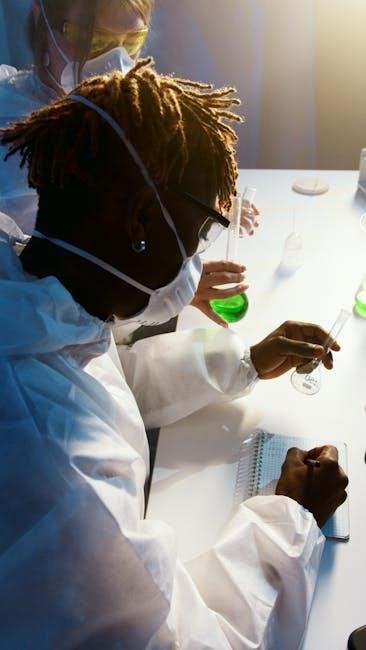
Foundational Courses in the Medical Assistant Curriculum
Foundational courses include anatomy, physiology, and medical terminology, providing students with essential knowledge and skills to excel in clinical and administrative healthcare roles effectively.
2.1 Anatomy and Physiology
Anatomy and physiology form the cornerstone of medical assistant training, providing a comprehensive understanding of the human body’s structure and functions. This course covers cells, tissues, organs, and systems, enabling students to grasp how the body operates under normal and abnormal conditions. Key topics include the skeletal, muscular, and circulatory systems, as well as the digestive, respiratory, and nervous systems. Understanding these concepts is essential for performing clinical tasks such as patient assessments, diagnostic procedures, and administering medications. The curriculum also emphasizes the relationship between anatomy and common medical procedures, ensuring students can apply their knowledge in real-world healthcare settings. This foundational knowledge prepares medical assistants to accurately perform their duties and provide effective patient care. The course is typically supplemented with interactive tools and practical exercises to enhance learning outcomes.
2.2 Key Topics in Anatomy and Physiology
The medical assistant curriculum emphasizes key topics in anatomy and physiology, focusing on the human body’s major systems. Students explore the skeletal, muscular, and circulatory systems, gaining insights into their functions and interconnections. The digestive, respiratory, and nervous systems are also covered, with a focus on their roles in maintaining bodily functions. Additionally, the curriculum delves into the endocrine and urinary systems, highlighting their importance in overall health. These topics are supported by detailed illustrations and case studies to enhance understanding. The study of anatomy and physiology equips medical assistants with the knowledge to accurately perform clinical tasks, such as measuring vital signs and assisting with diagnostic procedures. This foundational understanding is crucial for providing effective patient care and communicating effectively with healthcare professionals. The curriculum ensures students can identify and explain key anatomical structures and physiological processes, preparing them for real-world challenges in medical settings.
2.3 Health Concepts and Emergency Procedures
The medical assistant curriculum incorporates essential health concepts and emergency procedures to prepare students for real-world scenarios. Key topics include infection control measures, first aid techniques, and emergency response protocols. Students learn to identify signs of common medical emergencies, such as cardiac arrest or allergic reactions, and understand the appropriate interventions. The curriculum also covers patient assessment techniques, enabling students to evaluate vital signs and recognize abnormal findings. These skills are critical for providing immediate care and stabilizing patients until advanced medical help arrives. Practical training in emergency procedures ensures that medical assistants can act confidently and effectively in high-pressure situations, contributing to improved patient outcomes and safety in healthcare settings. This training is often reinforced through simulated experiences and hands-on practice.
2.4 Medical Terminology
Medical terminology is a cornerstone of the medical assistant curriculum, equipping students with the language of healthcare. This course focuses on understanding prefixes, suffixes, and root words to decode medical terms. Students learn to identify and pronounce terms related to body systems, diseases, and treatments. Practical applications include documenting patient records and communicating effectively with healthcare teams. The curriculum emphasizes common terms used in clinical and administrative settings, ensuring proficiency in both spoken and written formats. Mastery of medical terminology enables assistants to accurately interpret diagnostic procedures, medications, and patient histories. This skill is vital for maintaining clear communication and ensuring patient safety in diverse healthcare environments.
- Understanding anatomical and physiological terms.
- Applying terminology in clinical and administrative tasks.
- Mastering suffixes like “-itis” (inflammation) and “-logy” (study of).
- Learning prefixes such as “hypo-” (under) and “hyper-” (over);
Proficiency in medical terminology is essential for effective patient care and professional communication.

Clinical Skills Development
Clinical skills development trains medical assistants in patient assessment, diagnostic procedures, and infection control, ensuring hands-on expertise for real-world healthcare scenarios.
3.1 Patient Assessment Techniques
Patient assessment techniques are fundamental in medical assisting, focusing on vital sign measurement, medical history documentation, and physical examination methods. These skills enable accurate patient evaluation and informed decision-making, ensuring effective care delivery in clinical settings.
3.2 Diagnostic Procedures and Testing
Diagnostic procedures and testing are integral to the medical assistant curriculum, covering essential skills such as phlebotomy, electrocardiography, and specimen collection. These procedures enable healthcare professionals to gather critical data for accurate diagnoses and treatment plans, ensuring patient care is both effective and efficient.
3.3 Infection Control and Safety Measures
Infection control and safety measures are critical components of the medical assistant curriculum, focusing on preventing the spread of pathogens and maintaining a safe environment for patients and staff. Students learn proper hand hygiene, use of personal protective equipment (PPE), and sterilization techniques to minimize infection risks. The curriculum also covers safety protocols for handling biohazardous materials, sharps disposal, and emergency preparedness. Emphasis is placed on adherence to CDC and OSHA guidelines, ensuring compliance with industry standards. Practical training through simulations and real-world scenarios reinforces these concepts, equipping future medical assistants with the skills to protect themselves, patients, and others from infections and potential hazards in healthcare settings.

Administrative Duties Training
Administrative duties training equips students with skills in scheduling, records management, and patient communication, ensuring efficient office operations in healthcare settings.
4.1 Scheduling Appointments and Managing Records
Scheduling appointments and managing records are critical administrative tasks for medical assistants. Students learn to efficiently organize patient schedules using electronic health records (EHR) systems. Proper management of medical records ensures patient confidentiality and compliance with regulations like HIPAA. Training includes data entry, maintaining accurate files, and generating reports. Effective scheduling reduces wait times and improves patient satisfaction. These skills are essential for smooth healthcare operations, enabling medical assistants to support both clinical and administrative workflows seamlessly. Proficiency in EHR systems is emphasized, preparing students for real-world healthcare environments where digital record-keeping is standard. This training ensures medical assistants can handle administrative duties with precision and professionalism.
4.2 Medical Billing and Coding Practices
Medical billing and coding are essential skills for medical assistants, focusing on accurate insurance claims processing and data entry. Students learn to assign correct ICD-10 and CPT codes for diagnoses and procedures. Understanding billing software and compliance with HIPAA regulations is emphasized. Training includes preparing and submitting claims, managing insurance reimbursements, and resolving billing discrepancies. Proficiency in coding ensures precise patient records and timely payments. This coursework prepares students to handle financial aspects of healthcare, supporting practice profitability and efficient patient care. Mastery of billing and coding enhances employability in various healthcare settings, making it a cornerstone of the medical assistant curriculum.
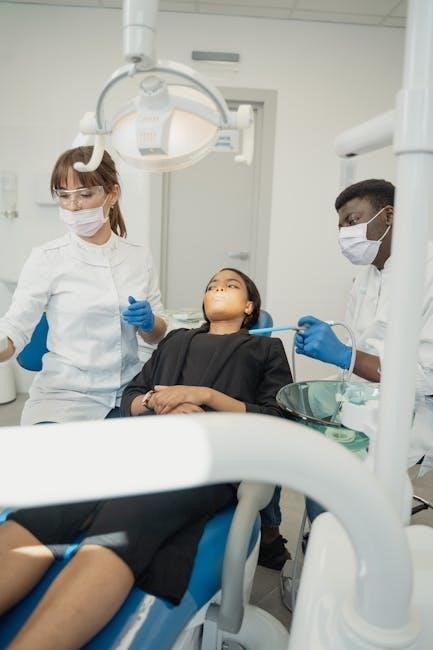
Specialized Coursework
Specialized coursework enhances medical assistants’ expertise in pharmacology, medication administration, and emergency preparedness, ensuring they can handle advanced clinical scenarios and provide specialized patient care effectively.
5.1 Pharmacology and Medication Administration
Pharmacology and medication administration are critical components of the medical assistant curriculum, focusing on understanding medications, their effects, and safe administration practices. Students learn about different drug classifications, dosages, and routes of administration. Key topics include pharmacokinetics, drug interactions, and adverse reactions. Emphasis is placed on accurate medication administration techniques, including oral, injectable, and topical methods. The curriculum also covers legal and ethical considerations, such as prescription laws and patient consent. Hands-on training in medication administration prepares students for real-world scenarios, ensuring they can safely and effectively administer medications in clinical settings. This coursework is essential for medical assistants to provide high-quality patient care and manage medications responsibly.
5.2 Emergency Preparedness and Response
Emergency preparedness and response training is a vital part of the medical assistant curriculum, equipping students with the skills to handle urgent situations effectively. This coursework covers first aid, wound care, and the use of emergency equipment such as defibrillators. Students learn to assess patients in crisis, stabilize conditions, and prioritize care. The curriculum also addresses mass casualty incidents, natural disasters, and pandemics, ensuring medical assistants are ready to respond in high-stress environments. Practical simulations and case studies are used to reinforce decision-making and teamwork. The goal is to empower medical assistants to provide immediate, compassionate care during emergencies, ensuring patient safety and optimal outcomes.
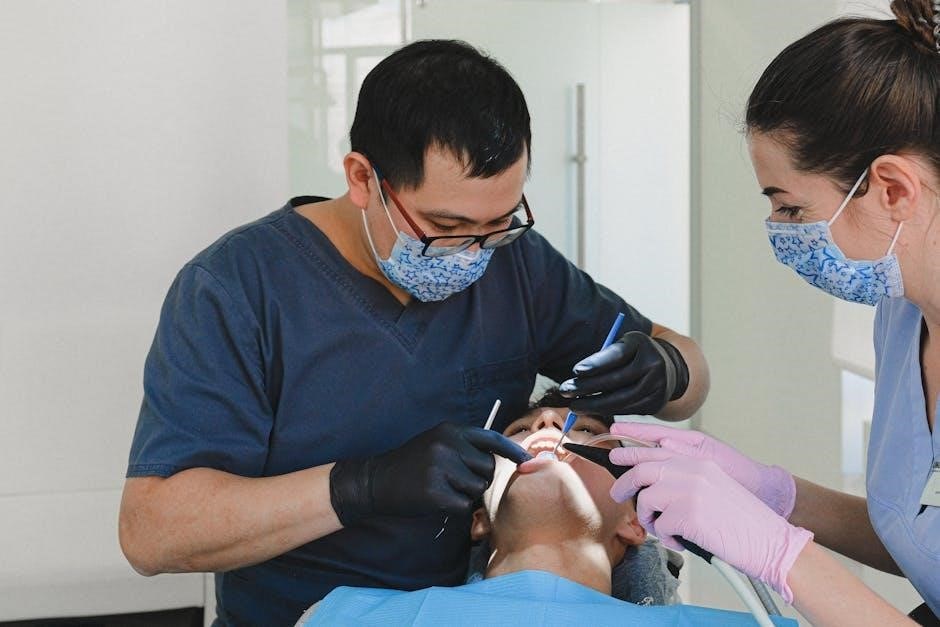
Certification Preparation
Certification preparation is integrated into the curriculum, focusing on CMA and RMA exams. Students engage in targeted study materials, practice exams, and review sessions to ensure readiness.
6.1 Certified Medical Assistant (CMA) Certification
The Certified Medical Assistant (CMA) certification is a prestigious credential offered by the American Association of Medical Assistants (AAMA). It validates a medical assistant’s expertise in both clinical and administrative tasks. To qualify for the CMA exam, candidates must graduate from a CAAHEP-accredited program, which is often detailed in the medical assistant curriculum PDF provided by educational institutions. These PDFs outline the necessary coursework, clinical hours, and competencies required to sit for the exam. The curriculum ensures students master patient assessment, diagnostic procedures, and medical office management, all of which are critical for passing the CMA certification. Successful completion of this exam significantly enhances job prospects and professional growth in the healthcare field.
6.2 Registered Medical Assistant (RMA) Certification
The Registered Medical Assistant (RMA) certification is another prominent credential for medical assistants, offered by the American Medical Technologists (AMT). It recognizes proficiency in clinical and administrative duties, preparing students for diverse healthcare roles. The RMA certification process involves meeting educational and experiential requirements, often detailed in medical assistant curriculum PDFs. These documents outline the necessary training in areas like patient care, laboratory procedures, and office management. While similar to the CMA certification, the RMA has distinct eligibility criteria and exam content. Both certifications are highly regarded and provide a competitive edge in the job market. Earning the RMA certification demonstrates a commitment to professional excellence and enhances career opportunities in medical assisting.

Clinical Experience and Internships
Clinical experience and internships provide hands-on training in real healthcare settings, allowing students to apply theoretical knowledge and develop practical skills in patient care and medical procedures.
7.1 Internship Opportunities in Medical Settings
Internship opportunities in medical settings are a cornerstone of medical assistant training, offering hands-on experience in real-world healthcare environments. These internships allow students to apply theoretical knowledge gained in the classroom to practical tasks, such as patient assessment, diagnostic procedures, and administrative duties. By working in clinics, hospitals, or private practices, students gain exposure to diverse patient populations and healthcare scenarios, enhancing their clinical and interpersonal skills. Internships also provide valuable insight into the daily responsibilities of medical assistants, helping students develop professionalism and confidence. Many programs integrate internships as a final step before graduation, ensuring students are fully prepared for certification exams and entry-level positions. This experiential learning bridges education and professional practice, equipping future medical assistants with the skills needed to excel in their careers.
7.2 Simulated Medical Experiences
Simulated medical experiences are integral to the medical assistant curriculum, providing students with controlled environments to practice clinical skills and decision-making. These simulations replicate real-world patient scenarios, allowing students to hone their abilities in patient assessment, diagnostic procedures, and emergency response. By using advanced medical equipment and realistic case studies, students gain confidence in their technical skills and interpersonal communication. Simulations also foster critical thinking and problem-solving, preparing students for unpredictable clinical situations. Many programs incorporate virtual simulations and hands-on labs to complement theoretical learning. These experiences are designed to bridge the gap between classroom instruction and real-world practice, ensuring students are well-equipped to handle diverse patient needs effectively. Simulated experiences often align with certification exam content, further preparing students for professional success.
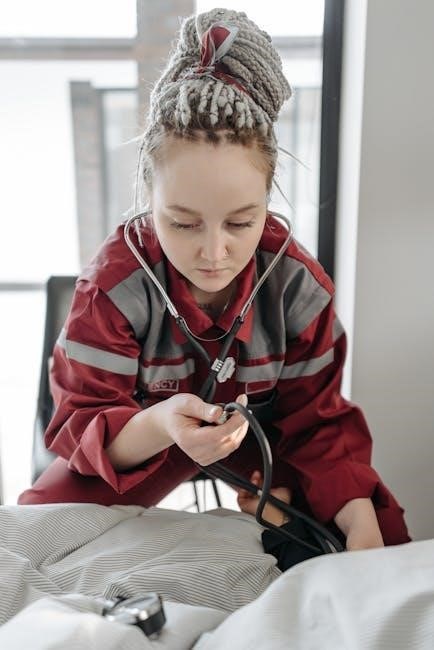
Program Formats
Medical assistant programs are offered in various formats, including on-campus, online, and hybrid models, providing flexibility to accommodate different learning preferences and lifestyles while ensuring comprehensive training.

8.1 On-Campus vs. Online Programs
Medical assistant programs are available in on-campus and online formats, catering to diverse learning preferences. On-campus programs offer hands-on training in clinical settings and face-to-face interactions with instructors, which can enhance practical skill development. Online programs provide flexibility, allowing students to complete coursework at their own pace, making them ideal for those with work or family commitments. Both formats typically cover the same curriculum, ensuring comprehensive training. However, online programs may require additional coordination for clinical internships or simulations. Hybrid models, which combine online coursework with on-campus labs or clinicals, offer a balanced approach. Choosing the right format depends on individual learning styles, scheduling needs, and access to resources. Both pathways aim to prepare students for certification and successful careers in healthcare.
8.2 Benefits of Hybrid Learning Models
Hybrid learning models in medical assistant programs offer a balanced approach, combining online coursework with on-campus clinical training. This format provides flexibility for students to manage their schedules while ensuring hands-on experience in medical settings. Online components allow for self-paced learning, while on-campus sessions focus on practical skills like patient assessment and diagnostic procedures. Hybrid models are particularly beneficial for students who need to balance education with work or family responsibilities. They also ensure that students gain the necessary clinical exposure to prepare for real-world healthcare environments. This blended approach enhances learning outcomes by providing both convenience and the essential practical training required for certification and career success. Hybrid models are increasingly popular due to their adaptability and effectiveness in medical assistant education.
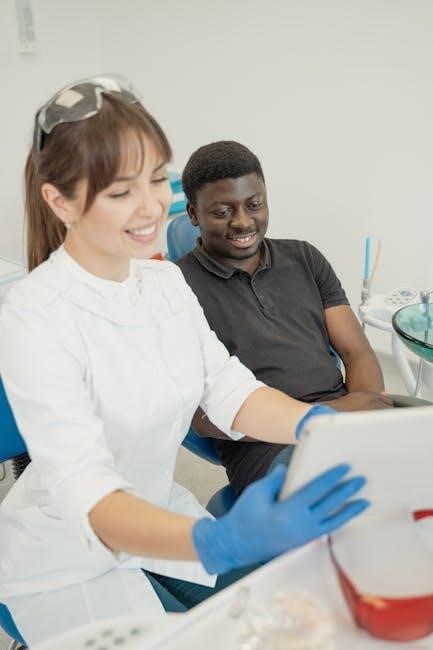
Curriculum Development and Evaluation
Curriculum development focuses on aligning courses with industry standards, while evaluation ensures continuous improvement, preparing students for evolving healthcare demands and certification requirements effectively.
9.1 Competency-Based Medical Education (CBME)
Competency-Based Medical Education (CBME) focuses on structured learning outcomes, ensuring students master essential skills and knowledge. It emphasizes practical application over traditional classroom methods. CBME curricula are divided into clear domains, such as patient care, communication, and professionalism. This approach ensures medical assistants are proficient in critical tasks. Assessments measure competency levels, guaranteeing readiness for real-world challenges. CBME aligns with industry standards, fostering confident, capable professionals. It bridges education and practice, ensuring a seamless transition into healthcare roles. By prioritizing outcomes, CBME prepares students to meet the demands of modern healthcare effectively. This method is integral to curriculum development, ensuring quality education. CBME is widely adopted for its effectiveness in skill development, making it a cornerstone of medical assistant training.
9.2 Continuous Curriculum Improvement
Continuous curriculum improvement ensures the medical assistant program stays relevant and effective. Regular assessments and feedback from faculty, students, and healthcare professionals drive updates. The curriculum evolves to reflect industry trends, technological advancements, and emerging healthcare needs. This process ensures students gain the most current and applicable knowledge. Updates often include new diagnostic techniques, coding practices, and patient care standards. Feedback loops with clinical partners help refine practical training. The goal is to align the curriculum with real-world demands, producing competent and adaptable graduates. By fostering a culture of continuous improvement, the program remains at the forefront of medical education, equipping students with the skills needed for success in dynamic healthcare environments. This iterative approach ensures the curriculum meets high standards and prepares students for future challenges.
The medical assistant curriculum equips students with essential skills, preparing them for successful healthcare careers. Continuous improvement ensures relevance, fostering competent and compassionate professionals in a evolving field.
10.1 Summary of Curriculum Importance
The medical assistant curriculum is essential for developing skilled professionals who can meet the demands of modern healthcare. By integrating foundational knowledge, clinical skills, and administrative duties, the curriculum ensures a comprehensive understanding of patient care and practice management. It emphasizes critical thinking, ethical practices, and adaptability, preparing graduates for diverse healthcare settings; The inclusion of certification preparation and hands-on experience further enhances career readiness. Continuous updates to the curriculum reflect advancements in medical practices, ensuring students are equipped with the latest techniques and technologies. Ultimately, the curriculum serves as a cornerstone for producing competent, compassionate, and well-rounded medical assistants capable of contributing effectively to healthcare teams.
10.2 Encouragement for Prospective Students
Embarking on a medical assistant career is a rewarding choice, offering opportunities to make a meaningful impact in healthcare. Prospective students can expect a comprehensive curriculum that equips them with both clinical and administrative skills, preparing them for diverse roles in healthcare settings. The program’s focus on hands-on training, certification preparation, and real-world experience ensures a smooth transition into the workforce. With the growing demand for medical assistants, graduates can look forward to stable and fulfilling careers. Encouraging aspiring students to pursue this path allows them to contribute to improving patient care and outcomes while building a lasting, impactful career in the healthcare industry.







